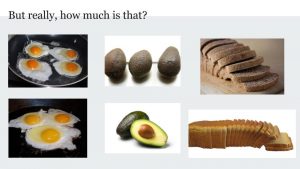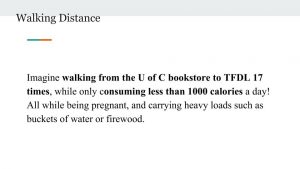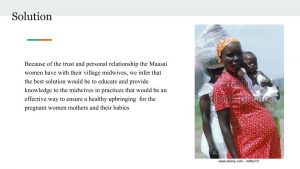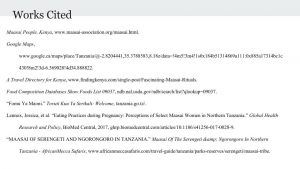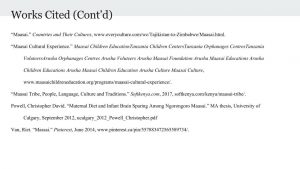
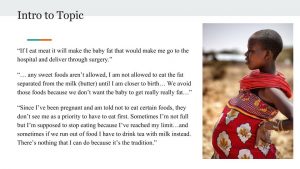
Intro to Topic:
- We are looking at the the potential issue of restricting food intake during the 3rd trimester of pregnancy
Food Restriction in 3rd trimester
- Smaller Babies
- Cognitive impairment
- Effect of future growth patterns
Here are some quotes from Maasai women regarding their food intake:
- “If I eat meat it will make the baby fat that would make me go to the hospital and deliver through surgery.”
- “… any sweet foods aren’t allowed, I am not allowed to eat the fat separated from the milk (butter) until I am closer to birth… We avoid those foods because we don’t want the baby to get really really fat…”
- “Since I’ve been pregnant and am told not to eat certain foods, they don’t see me as a priority to have to eat first. Sometimes I’m not full but I’m supposed to stop eating because I’ve reached my limit…and sometimes if we run out of food I have to drink tea with milk instead. There’s nothing that I can do because it’s the tradition.”
An article from the Global Health and Research Policy, called Eating practices during pregnancy: perceptions of select Maasai women in Northern Tanzania:
Says that their research reveals: five themes: (1) Eating less food makes baby come easier, (2) Not producing food means more dependence, (3) Working hard harms my baby, (4) Knowing what is needed for a good pregnancy and (5) Preferring our traditional ways for pregnancy and birth.
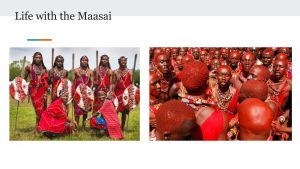
(Food, Women and Colonization)
The Maasai people are several African tribes found in Kenya and Tanzania.
The Maasai are often thought of as cattle herders, but as we heard with J and in some further research they are taking more part in agriculture. The land that is no longer available has taken away the majority of their cattles grazing land and so now they are forced to use the land for a new food source, corn or maize.
The traditional diet consists of six basic foods: meat, blood, milk, fat, honey, and tree bark. However today there diet is has adapted to their change of scenery and they “ have grown dependent on food produced in other areas such as maize meal, rice, potatoes, cabbage”.
Sonja will touch more specifically on Gender , but here is a little snippet from a “countries and their cultures” website
“The Maasai are a patriarchal society; men typically speak for women and make decisions in the family. Male elders decide community matters. Until the age of seven, boys and girls are raised together. Mothers remain close to their children, especially their sons, throughout life. Once circumcised, sons usually move away from their father’s village, but they still follow his advice. Girls learn to fear and respect their fathers and must never be near them when they eat.”
A fun fact about the Maasai people,
They basically avoided being colonized by the British, and the Europeans were very impressed by their warriors and resistance to slavery. However they were in the past severely affected by human and cattle diseases
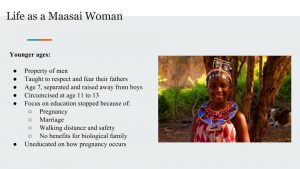
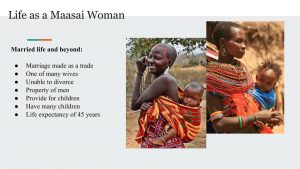

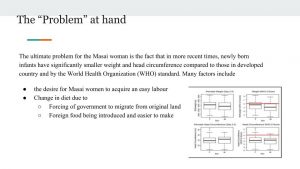
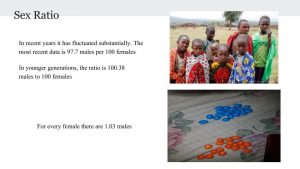
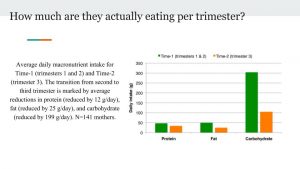
Figure 4-2. Percent change in average daily caloric and macronutrient intake from Time-1 (trimesters 1 and 2) to Time-2 (trimester 3). The transition from second to third trimester is marked by average reductions in Calories (reduced by 52%), protein (reduced by 26%), fat (reduced by 50%), and carbohydrate (reduced by 65%). N=141 mothers.
Protein:
- Trimester 1-2
- Approx 48 grams (about 4 fried eggs)
- Trimester 3
- Approx 38 grams (just under 3 fried eggs)
Fat:
- Trimester 1-2
- Approx 50 grams (3 avocados)
- Trimester 3
- Approx 25 grams (1.5 avocados)
Carbohydrates:
- Trimester 1-2
- Approx 300 grams (302) (23 slices of whole wheat bread)
- Trimester 3
- Approx 100 grams (105) (8 slices of whole wheat bread)
